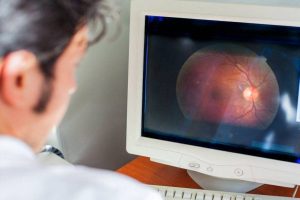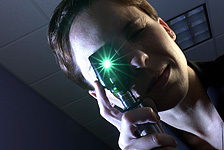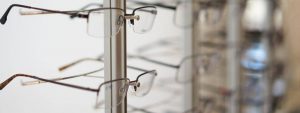Without proper treatment, diabetic retinopathy can lead to vision loss and even blindness.
Diabetic retinopathy occurs in four stages and can progress rapidly if not treated and monitored properly. Treatment of this sight-threatening disease may include different methods, depending on the stage of the disease.
Throughout the treatment process, it is crucial that your eye doctor monitors your ocular health on a regular basis.
If you have diabetes, contact an eye doctor near you, who can diagnose and discuss the best treatment options.
SEE RELATED: How Do Anti-VEGF Injections Work?
Treatment methods for diabetic retinopathy
Anti-VEGF medications
Anti-vascular endothelial growth factor (Anti-VEGF) treatments block the production of the VEGF protein. When VEGF is present in the retina at high levels, it can cause the retinal blood vessels to leak blood fluid, and increase the production of abnormal blood vessels.
Anti-VEGF treatments are administered through eye injections. Your eye doctor will perform this procedure in his office and will discuss with you how often treatments will be required, depending on your individual case.
During this procedure, your eye doctor will numb your eyes using special eye drops before inserting a tiny needle. You should not feel any pain.
Types of anti-VEGF medications
There are three different types of anti-VEGF medications that work to block the production of abnormal blood vessels in the retina. Each of the medications have been proven safe and effective, but differ in the type of drug they use, as well is their cost.
- Avastin uses a drug called bevacizumab.
- Lucentis uses a drug called ranibizumab.
- Eylea uses a drug called aflibercept and is generally used to treat DME.
Laser photocoagulation
Laser photocoagulation is a laser procedure that involves sealing the leaking blood vessels in order to prevent abnormal blood vessel growth.
Pan-retinal photocoagulation
Pan-retinal photocoagulation is another type of laser procedure performed on the periphery of the retina. This procedure is used to protect the vision that has not yet been affected by the disease.
During this procedure, tissue on the peripheral retina that is not needed for basic vision, is destroyed. In doing so, an increased production of blood supply to the inner portion of the retina will occur.
Vitrectomy
A vitrectomy is a surgical procedure to remove the blood and fluid that has leaked into the vitreous humor. This procedure is typically only performed if all other treatment methods have proven ineffective.
What can you do at home?
Successful treatment of diabetic retinopathy not only involves surgical procedures and medications, but also requires your participation as well.
To increase your chances of optimal treatment results and prevent future vision problems related to diabetes, speak to your doctor about changes you can make to keep your body healthy.
The best way to control your diabetes is to eat a healthy diet, exercise regularly, and control your blood sugar, blood pressure and cholesterol levels.
Keeping diabetes under control will not only help to increase optimal treatment results, but will also protect your vision in the future.
LEARN MORE: Guide to Eye Conditions
Schedule an appointment with an eye doctor for a comprehensive eye exam, and to discuss any questions you may have about treating your diabetes.










